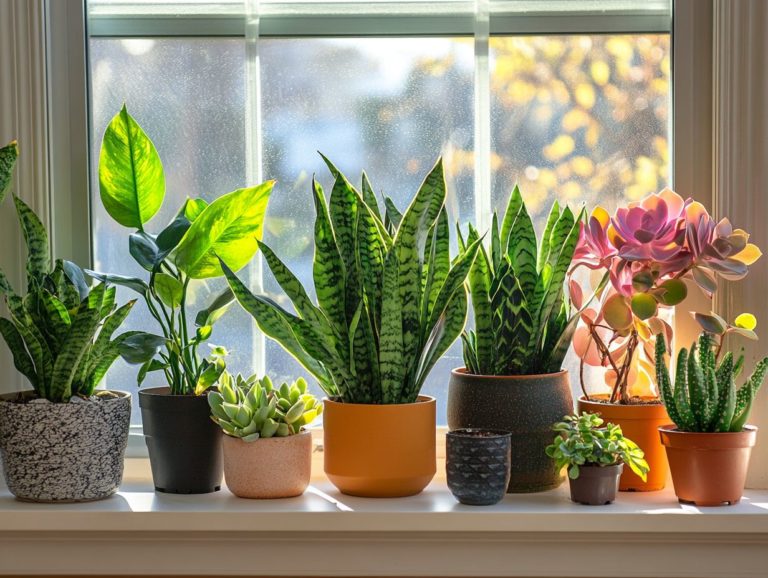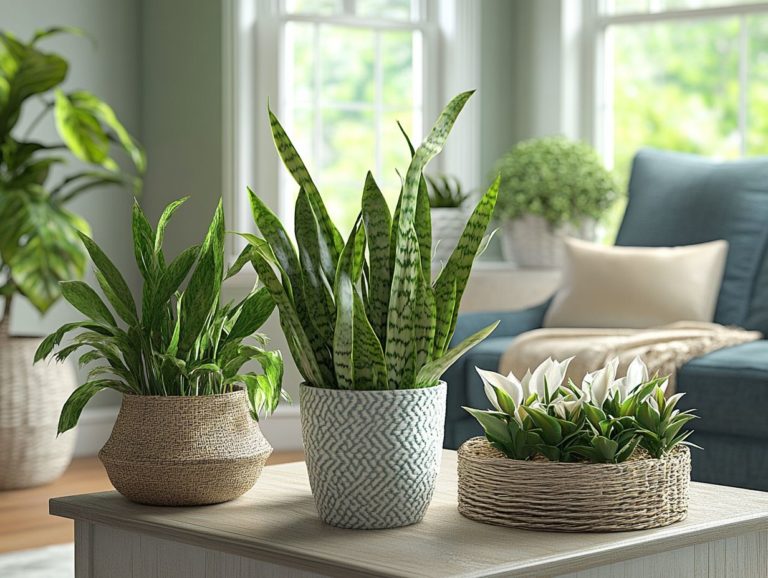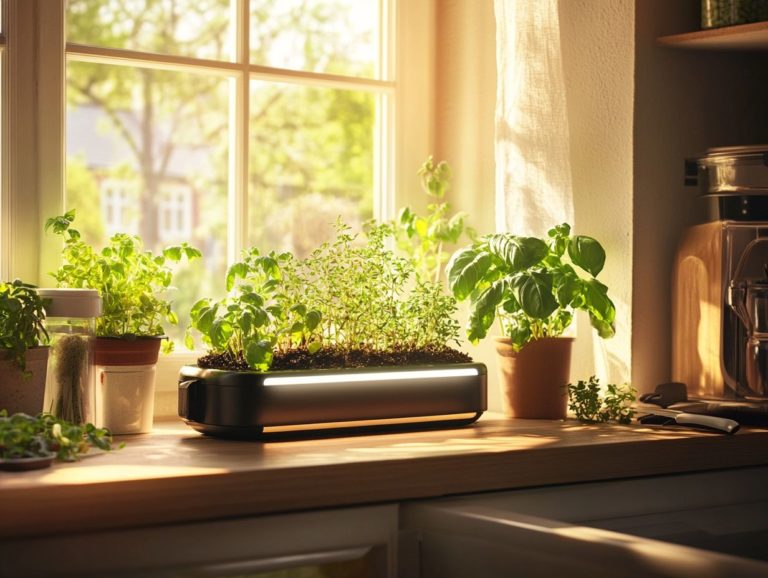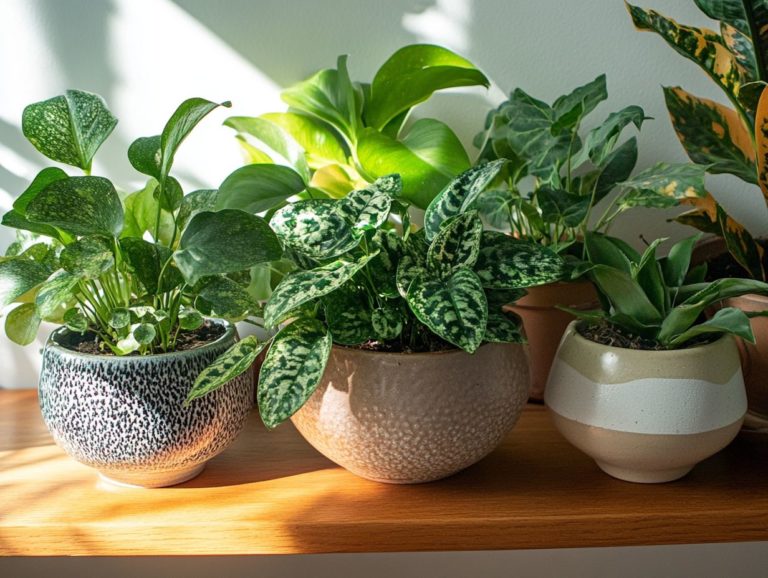Tips for Effective Plant Lighting
Proper plant lighting is essential for promoting healthy growth and vibrant foliage. Whether you re nurturing indoor houseplants or tending to a backyard garden, understanding how light influences plant development can transform your experience.
This guide delves into the types of lighting available both natural and artificial and highlights crucial factors such as intensity, duration, and spectrum to consider when choosing the ideal setup.
It also tackles common pitfalls and offers valuable tips for maximizing efficiency, equipping you to troubleshoot any challenges you encounter. Get ready to transform your plant care and watch them thrive like never before!
Contents
Key Takeaways:
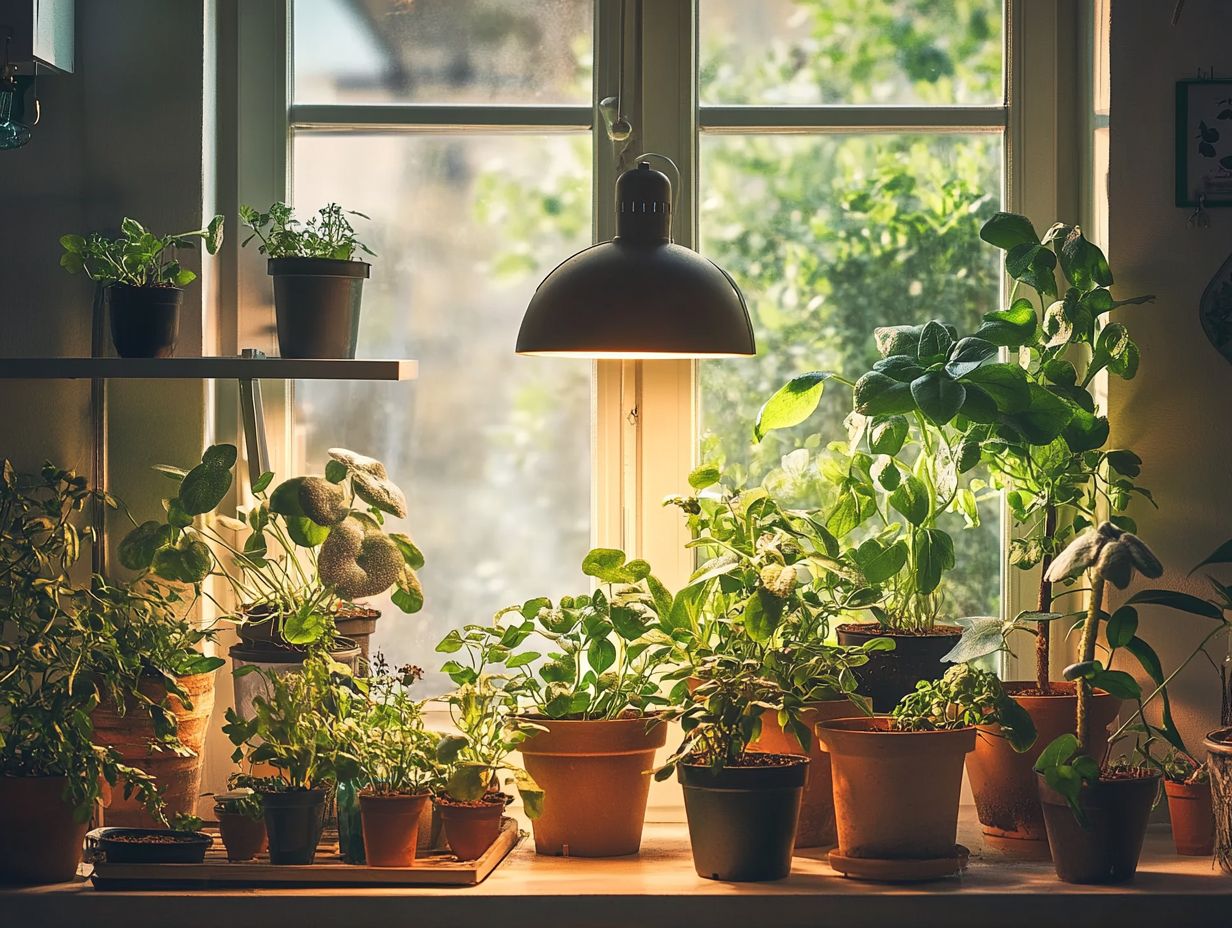
- Proper lighting is crucial for healthy plant growth, affecting processes like photosynthesis, flowering, and overall development.
- Natural light is ideal, but artificial lighting can be effective if chosen correctly regarding intensity, duration, and spectrum.
- To avoid common mistakes, consider your plants’ specific needs and utilize tips for efficient lighting.
The Importance of Proper Plant Lighting
Proper plant lighting is vital for achieving optimal growth and health in both indoor plants and outdoor gardens. Without the right light conditions, plants may struggle to perform essential processes like converting light into energy, which is crucial for their well-being and growth.
By selecting the appropriate grow lights be it LED, fluorescent, or high-intensity discharge you can significantly enhance plant health and accelerate growth, especially in indoor gardening.
Understanding the differences between natural sunlight and artificial light can elevate your indoor gardening experience, ensuring your houseplants thrive, particularly with supplemental lighting.
How Light Affects Plant Growth
Light is crucial for plant growth, primarily through the process of converting light into energy. In this process, chlorophyll in the leaves absorbs light, turning carbon dioxide and water into glucose and oxygen.
The effectiveness of this process depends on the specific wavelengths of light your plants receive. Different types of light, like blue and red wavelengths, have unique effects on chlorophyll production and overall plant health.
Blue light promotes leafy growth, making it ideal for greens, while red light encourages flowering and fruiting in many plants. The intensity of light also plays a significant role; too little can stunt growth, while too much can lead to photoinhibition, where the plant becomes overwhelmed.
Understanding these nuances is essential for creating the optimal growth environment tailored to your plants’ needs.
Types of Plant Lighting
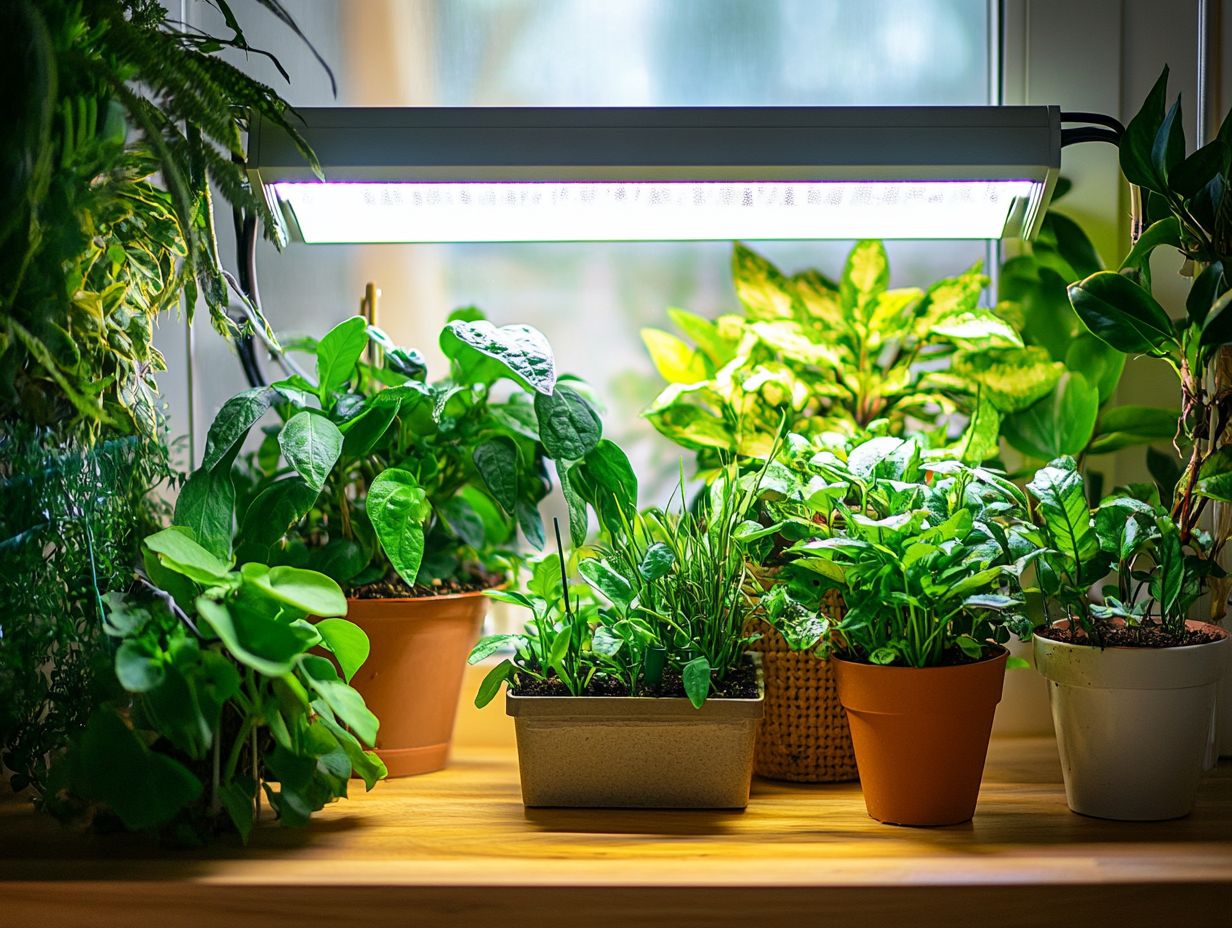
Understanding different types of plant lighting is essential for ensuring your indoor plants receive the ideal conditions to thrive. Whether you re considering traditional incandescent bulbs, energy-efficient fluorescent lights, modern LED grow lights, or high-intensity discharge systems, each option comes with unique benefits and drawbacks.
By carefully selecting the right light sources for your specific plant types be it leafy greens or vibrant flowering plants you can significantly enhance their growth and overall health.
Natural vs. Artificial Light
In terms of nourishing your plants, both natural sunlight and artificial light have their own pros and cons that can significantly impact their growth and overall health.
Understanding these differences is essential for you as an indoor gardener aiming to optimize your plants’ potential. Natural sunlight delivers a balanced spectrum of light, vital for photosynthesis, which shifts throughout the day and across seasons. This change helps plants grow well, allowing your plants to truly flourish.
On the flip side, artificial light tends to have a limited spectrum and may lack those critical wavelengths that your plants need at various growth stages. While it does grant you greater control over light placement and duration, the challenge lies in mimicking the subtle nuances of natural light.
If you don t replicate these cycles effectively, you may find it difficult to achieve the same vitality that sunlight effortlessly provides.
Factors to Consider When Choosing Plant Lighting
Selecting the ideal plant lighting requires careful consideration of several critical factors: light levels, duration, and spectrum. Each of these elements plays a pivotal role in satisfying the unique light demands of your indoor plants, ensuring they thrive in their environment.
Intensity, Duration, and Spectrum
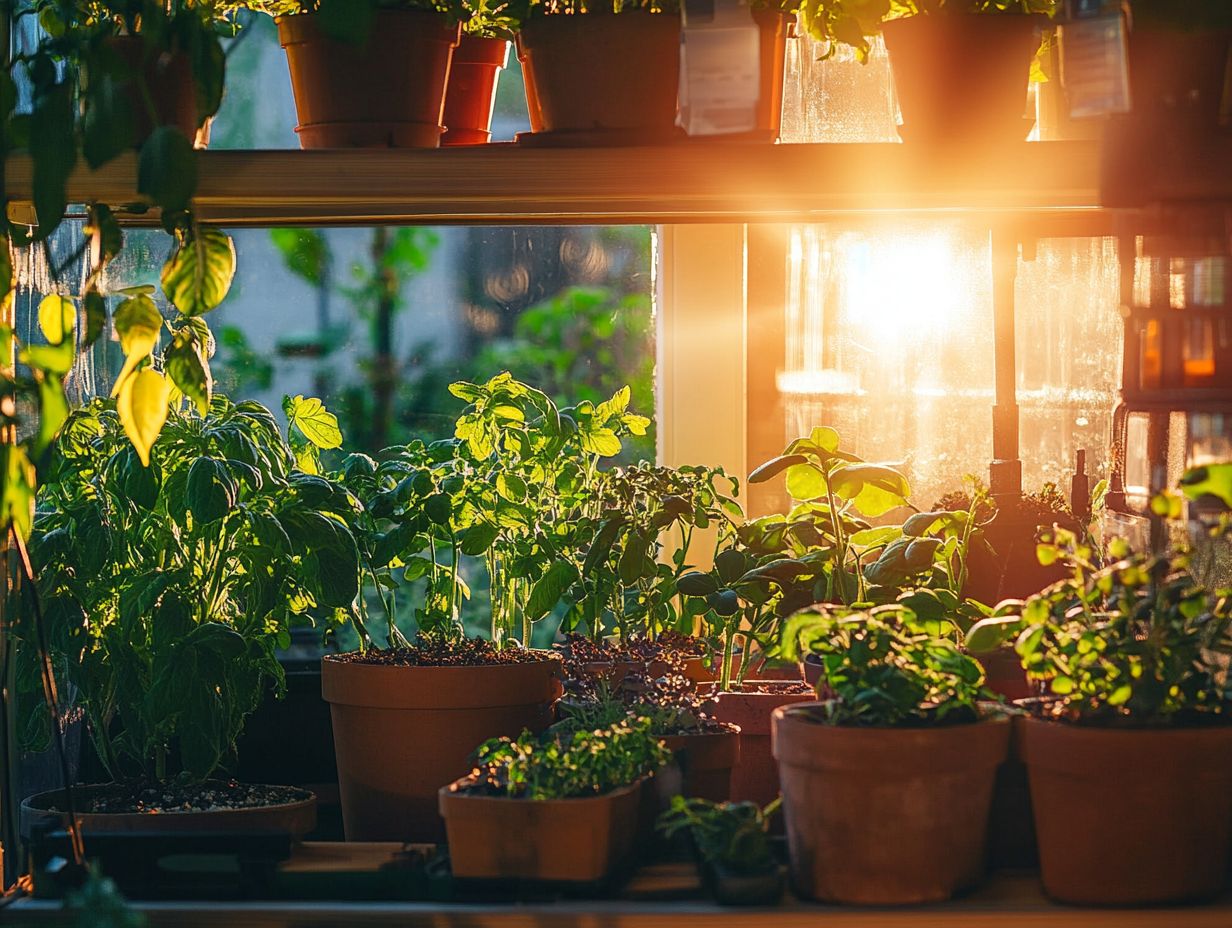
Light levels, duration, and spectrum are essential elements in your plants’ growth, as they directly influence the light needed for photosynthesis vital for energy production.
Different plants need different amounts of light, shaping how effectively each one utilizes light for photosynthesis. For instance, shade-tolerant plants, like ferns, flourish in lower light conditions and benefit from extended light durations. In contrast, sun-loving varieties, such as tomatoes and sunflowers, thrive under brighter light and shorter exposure to maximize their growth potential.
The light spectrum significantly impacts chlorophyll production; blue light encourages vigorous vegetative growth, while red light is more conducive to flowering and fruiting. By grasping these dynamics, you can optimize growing conditions, ultimately nurturing healthier, more productive plants.
Common Mistakes in Plant Lighting
In the realm of plant lighting, indoor gardeners can stumble into traps that impede their plants’ growth and overall health. Often, these issues stem from insufficient lighting placement and incorrect light cycles.
Avoiding Common Pitfalls
To help your plants grow, avoid common mistakes related to lighting and mismanaging the specific light requirements of your houseplants, particularly in terms of light quality and intensity.
Many plant owners mistakenly believe that all houseplants thrive under identical lighting conditions, which often results in lackluster growth or even distress among their green companions. One prevalent misstep is using artificial lighting that is either too intense or insufficiently weak, rather than selecting the right spectrum and intensity tailored to each plant’s needs. For example, while succulents thrive in bright light, ferns prefer a cozy spot with indirect sunlight.
To overcome these challenges, delve into the light preferences of your individual plants and consider investing in adjustable grow lights, especially where natural light falls short. You can also explore using sunlight for indoor plants effectively. This way, each plant will bask in the ideal illumination it needs for robust and healthy growth.
Maximizing Plant Lighting Efficiency
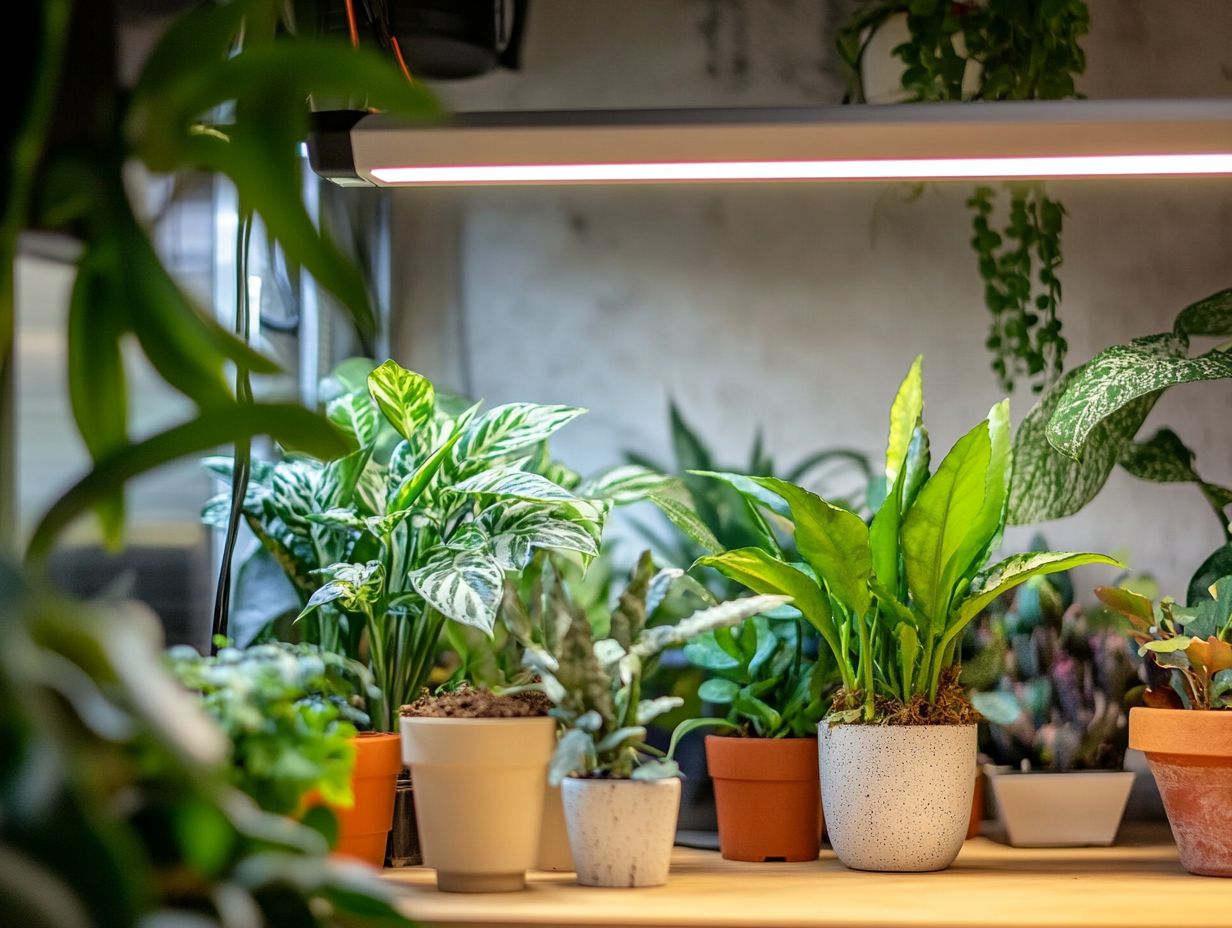
Maximizing plant lighting efficiency is crucial for achieving optimal plant growth while simultaneously minimizing energy consumption. You can accomplish this by making smart choices with your lighting fixtures, utilizing timers, and selecting the right grow bulbs.
This thoughtful approach not only enhances your plants’ health but also promotes a more sustainable environment.
Take charge of your plant lighting today for a lush, vibrant indoor garden!
Tips for Optimal Plant Growth
For optimal plant growth, you need to understand the balance of light quality, duration, and the right light sources. These factors are key to success in indoor gardening.
Lighting directly impacts the health of your plants. It plays a crucial role in how they make food.
Using LED grow lights conserves energy and offers a flexible spectrum tailored to your plants’ needs. This can be a real game-changer!
Make sure the duration of light exposure matches your plants’ requirements. Some species thrive on 12 hours of light, while others need only 8 hours.
By balancing these factors, you can cultivate lush foliage and enjoy bountiful harvests.
Troubleshooting Plant Lighting Issues
Troubleshooting lighting issues is essential for your plants’ health. Your indoor greenery needs optimal light to grow well.
By solving these challenges, you maximize your plants’ potential and enhance your living space’s beauty with effective lighting strategies.
Identifying and Addressing Problems
Identifying light issues is crucial for your plants nutrition and health. Poor light can lead to stunted growth or even decline.
Watch how your plants respond over time to diagnose light problems. Signs like yellowing leaves or leggy growth show they need more light.
Check the light source, duration, and spectrum. Full-spectrum lighting closely mimics sunlight and helps plants thrive.
Adjusting the lamp’s distance or using higher-quality LED lights can make a big difference!
Don’t forget to rotate your plants regularly. This ensures every side gets enough light, enhancing absorption and nutrient uptake.
Monitor your plants frequently to maintain the right balance between light and their health.
Frequently Asked Questions
What are some tips for effective plant lighting?
1. Place your plants near a window with plenty of natural light, avoiding direct sunlight.
2. Invest in full-spectrum LED grow lights for indoor plants.
3. Use reflective surfaces like mirrors or foil to redirect light toward your plants.
4. Adjust the height and angle of your grow lights to meet your plants’ needs.
5. Group plants with similar lighting needs together.
6. Regularly clean your light sources to ensure maximum absorption.



